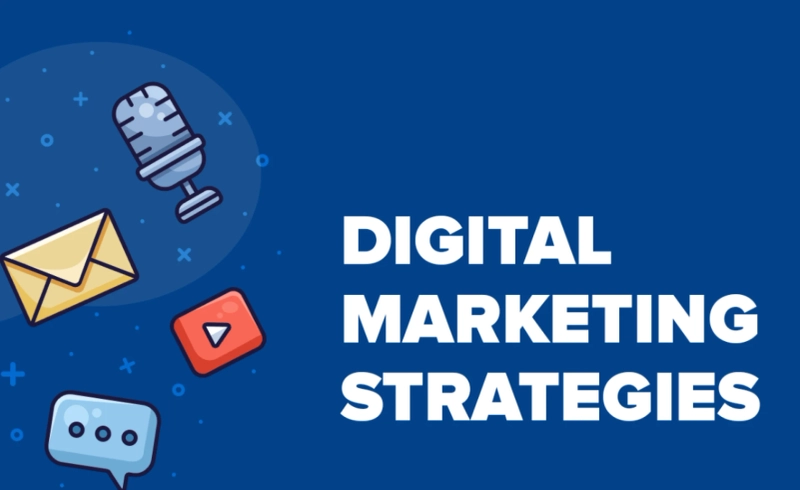Data-driven marketing is a strategic approach that leverages insights from data analytics to optimize marketing strategies, enhance customer engagement, and drive business growth.
In today’s digital age, where vast amounts of data are generated daily, businesses can harness this information to make informed decisions and achieve measurable results.
This guide explores the fundamentals of data-driven marketing and how organizations can effectively utilize analytics to propel their marketing efforts forward.
1. Understanding Data-Driven Marketing
Data-driven marketing involves analyzing data collected from various sources to gain actionable insights into consumer behavior, preferences, and trends. By utilizing data analytics tools and technologies, marketers can identify patterns, predict outcomes, and tailor marketing campaigns to target specific audiences more effectively. This approach shifts marketing strategies from intuition-based decisions to evidence-based strategies grounded in data.
2. Importance of Data Analytics in Marketing
Data analytics plays a pivotal role in marketing by:
- Targeting Audience Segments: Identifying and segmenting audiences based on demographics, behaviors, and preferences to personalize marketing messages and offers.
- Optimizing Campaign Performance: Monitoring key metrics such as click-through rates (CTR), conversion rates, and return on investment (ROI) to optimize marketing campaigns in real-time.
- Improving Customer Experience: Enhancing customer journeys by delivering relevant content and personalized experiences based on historical interactions and preferences.
- Measuring Marketing Effectiveness: Assessing the impact of marketing initiatives and attributing revenue to specific campaigns or channels to justify marketing spend.
3. Implementing a Data-Driven Marketing Strategy
To implement a successful data-driven marketing strategy, businesses should follow these key steps:
- Define Goals and KPIs: Establish clear objectives aligned with business goals, such as increasing sales, improving customer retention, or expanding market share. Define key performance indicators (KPIs) to measure progress and success.
- Data Collection and Integration: Collect data from multiple sources, including website analytics, CRM systems, social media platforms, and customer surveys. Integrate data to create a unified view of customer behavior and interactions across channels.
- Data Analysis and Insights: Use data analytics tools and techniques, such as predictive analytics, segmentation analysis, and cohort analysis, to extract meaningful insights. Identify trends, patterns, and opportunities that inform marketing strategies.
- Personalization and Targeting: Leverage data insights to create personalized marketing campaigns tailored to specific audience segments. Deliver relevant content, offers, and recommendations based on individual preferences and behaviors.
- Continuous Optimization: Continuously monitor campaign performance, analyze results, and refine strategies based on data-driven insights. Test different variables, such as messaging, creative elements, and targeting criteria, to optimize marketing effectiveness.
4. Leveraging Customer Data
Customer data is a valuable asset for data-driven marketing:
- Behavioral Data: Track customer interactions and behaviors across touchpoints to understand preferences and predict future actions.
- Transactional Data: Analyze purchase history, order frequency, and average order value to segment customers and personalize marketing efforts.
- Feedback and Sentiment Analysis: Gather feedback through surveys, reviews, and social media monitoring to gauge customer satisfaction and sentiment.
- Third-Party Data: Supplement internal data with third-party data sources to enrich customer profiles and enhance targeting capabilities.
5. Data Privacy and Compliance
Maintaining data privacy and complying with regulations (e.g., GDPR, CCPA) are paramount in data-driven marketing. Obtain consent for data collection and use, secure data storage and transmission, and adhere to ethical practices in data handling and analysis. Transparency in data usage builds trust with customers and ensures compliance with legal requirements.
6. Tools and Technologies
Numerous tools and technologies facilitate data-driven marketing:
- Analytics Platforms: Google Analytics, Adobe Analytics, and HubSpot Analytics provide insights into website performance and user behavior.
- Customer Relationship Management (CRM): Salesforce, HubSpot CRM, and Zoho CRM manage customer relationships and track interactions across channels.
- Marketing Automation: Marketo, Mailchimp, and HubSpot automate marketing tasks, personalize communications, and nurture leads based on behavioral data.
- Predictive Analytics: IBM Watson Analytics, SAS Analytics, and Microsoft Azure Machine Learning predict future trends and customer behavior patterns.
7. Measuring ROI and Effectiveness
Quantifying the return on investment (ROI) of data-driven marketing initiatives involves:
- Attribution Modeling: Attribute conversions and revenue to specific marketing touchpoints, campaigns, or channels.
- Lifetime Value (LTV): Calculate the long-term value of acquired customers based on their purchasing behaviors and interactions.
- Marketing Mix Modeling: Analyze the contribution of each marketing channel to overall revenue generation and ROI.
- Dashboards and Reporting: Create customized dashboards and reports using analytics platforms to visualize KPIs, monitor trends, and communicate results to stakeholders.
8. Challenges and Considerations
Data-driven marketing faces challenges such as:
- Data Quality: Ensuring data accuracy, completeness, and reliability for informed decision-making.
- Skill and Talent: Recruiting and retaining professionals with expertise in data analytics, statistics, and marketing.
- Integration Complexity: Overcoming challenges in integrating disparate data sources and systems for a unified view of customer data.
- Privacy Concerns: Addressing consumer concerns about data privacy, security breaches, and ethical data usage practices.
9. Future Trends in Data-Driven Marketing
The future of data-driven marketing is shaped by emerging trends:
- Artificial Intelligence (AI): Leveraging AI for predictive analytics, personalization, and automated decision-making.
- Machine Learning: Using machine learning algorithms to analyze vast datasets and uncover actionable insights.
- Predictive Modeling: Anticipating customer behavior and market trends to proactively adjust marketing strategies.
- Data Visualization: Enhancing data storytelling through interactive visualizations and dashboards for better understanding and decision-making.
10. Conclusion
Data-driven marketing empowers businesses to leverage data analytics for informed decision-making, personalized customer experiences, and measurable business growth. By embracing data-driven strategies, defining clear objectives, leveraging customer insights, and optimizing marketing efforts based on data-driven insights, organizations can achieve competitive advantage and enhance ROI. As technologies and consumer behaviors evolve, continuous adaptation and innovation in data-driven marketing will be crucial for staying ahead in the dynamic digital landscape. Incorporate these principles into your marketing strategy to harness the power of data and drive sustainable business success.


